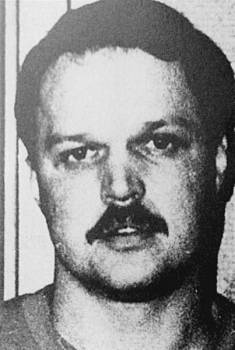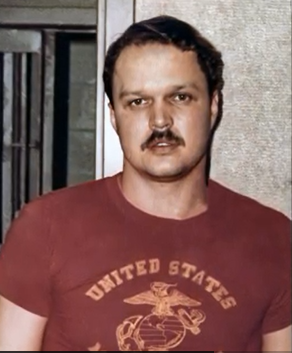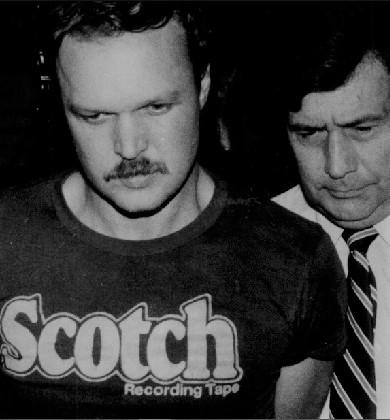
1952 - 1994
Larry Eyler
Summary
Name:
Larry EylerNickname:
The Highway Killer / The Interstate KillerYears Active:
1982 - 1984Birth:
December 21, 1952Status:
DeceasedClass:
Serial KillerVictims:
21+Method:
StabbingDeath:
March 06, 1994Nationality:
USA
1952 - 1994
Larry Eyler
Summary: Serial Killer
Name:
Larry EylerNickname:
The Highway Killer / The Interstate KillerStatus:
DeceasedVictims:
21+Method:
StabbingNationality:
USABirth:
December 21, 1952Death:
March 06, 1994Years Active:
1982 - 1984Date Convicted:
December 13, 1990bio
Larry Eyler was born on December 21, 1952, in Crawfordsville, Indiana, into a troubled household as the youngest of four children. His father, an alcoholic, was known to be abusive both physically and emotionally towards his family. After his parents divorced in 1955, Larry and his siblings were often left under the care of babysitters or their older siblings due to their mother's struggle to support the family while working multiple jobs.
In 1957, Larry's mother remarried, but this marriage, like her subsequent marriages, ended in divorce. Throughout his childhood, Larry and his siblings faced abuse from their stepfathers, one of whom would discipline Larry by submerging his head in scalding water.
Larry attended St. Joseph School in Lebanon, Indiana. Despite being physically active and tall for his age, he was frequently bullied due to his family's financial status and his parents' marital issues. This often resulted in his sister defending him against his tormentors. Recognized as a quiet and likable pupil by his teachers, Larry struggled with insecurity and fear of abandonment, which were linked to his turbulent home life.
In 1963, Larry's behavior led his mother to place him in a home for unruly boys, a stay that proved emotionally devastating for him. Psychological testing during this period revealed average intelligence but significant emotional challenges, prompting a recommendation for temporary placement in a Catholic boys' home in Fort Wayne. He stayed there for six months before returning to live with his mother.

As Larry reached puberty, he realized he was homosexual. He was open about his sexual orientation only within his family circle and wrestled with intense feelings of self-hatred tied to his sexuality. Throughout high school, he dated girls sporadically, though these relationships remained non-physical. Deeply religious, Larry confided in close acquaintances about his struggle to reconcile his faith with his sexual identity.
After failing to graduate from high school, Larry obtained a General Educational Development certificate and briefly worked as a private security guard at Marion County General Hospital. He later found work in a shoe store, and during this period, he began to explore Indianapolis's gay community, frequenting gay bars and engaging in casual relationships.
By the mid-1970s, Larry was well-known within the local gay community, especially among those interested in leather fetishes. While some knew him as a good-looking and laid-back individual close to his family, others who had been intimate with him described him as having a violent temper that manifested during sexual encounters, often resulting in sadistic and abusive behavior.
Larry primarily worked as a house painter and lived in Terre Haute in a condominium with Robert David Little, a 38-year-old library science professor he had met while studying at Indiana State University. Their relationship was platonic, with Larry viewing Little as a father figure. Despite this, the pair often socialized within the gay community, with Larry sometimes bringing young men home to engage in sexual activities with them and Little.
murder story
On August 3, 1978, Larry Eyler committed his first attempted murder. He picked up a 19-year-old hitchhiker named Craig Long in Terre Haute, Indiana. After Long entered the truck, Eyler tried to proposition him. When Long attempted to leave the vehicle, Eyler threatened him with a knife. Eyler drove to a rural area, forced Long to undress, and restrained him with handcuffs. Long tried to escape, but Eyler stabbed him in the chest. Long pretended to be dead, eventually managing to reach help and survived the attack. Eyler was arrested soon after.
Eyler was charged with aggravated battery but was acquitted after a deal was made. Moving forward, between 1982 and 1984, Eyler killed at least twenty-one young men, often luring them with alcohol or drugs. He would restrain his victims and subject them to extreme violence. Many of the murders involved stabbing, and some victims were dismembered. Their bodies were usually found in remote fields, often near major highways in Indiana and Illinois, with evidence suggesting severe abuse before death.

One of his first confirmed victims was Steven Crockett, a 19-year-old, who was murdered on October 23, 1982. His autopsy showed he had sustained multiple stab wounds. Other victims included Edgar Underkofler, Richard Bruce, and John Roach. Eyler often targeted young male hitchhikers or male prostitutes.
Eyler's patterns became evident to law enforcement, leading to the formation of a task force to investigate the disappearances and murders. Eyler was arrested again on September 30, 1983, but was released due to legal complications regarding the evidence gathered during his detainment.
The investigation intensified after Eyler's involvement was suggested by a former associate. Eyler was charged with the murder of Ralph Calise, but this conviction faced legal setbacks. Eyler was eventually found guilty of murdering 16-year-old Daniel Bridges in 1984, after his dismembered body was found in a dumpster. Eyler was sentenced to death, but he continued to assert his innocence regarding certain murders.
Before his death from AIDS-related complications on March 6, 1994, Eyler confessed to the murders of twenty-one young men, claiming he was driven by issues stemming from personal relationships. After his death, his attorney revealed the names of several victims he had confessed to killing, adding complexity to the cases that remained unsolved. Eyler's story remains a critical part of discussions on serial killings, particularly in the Midwest region during the early 1980s.